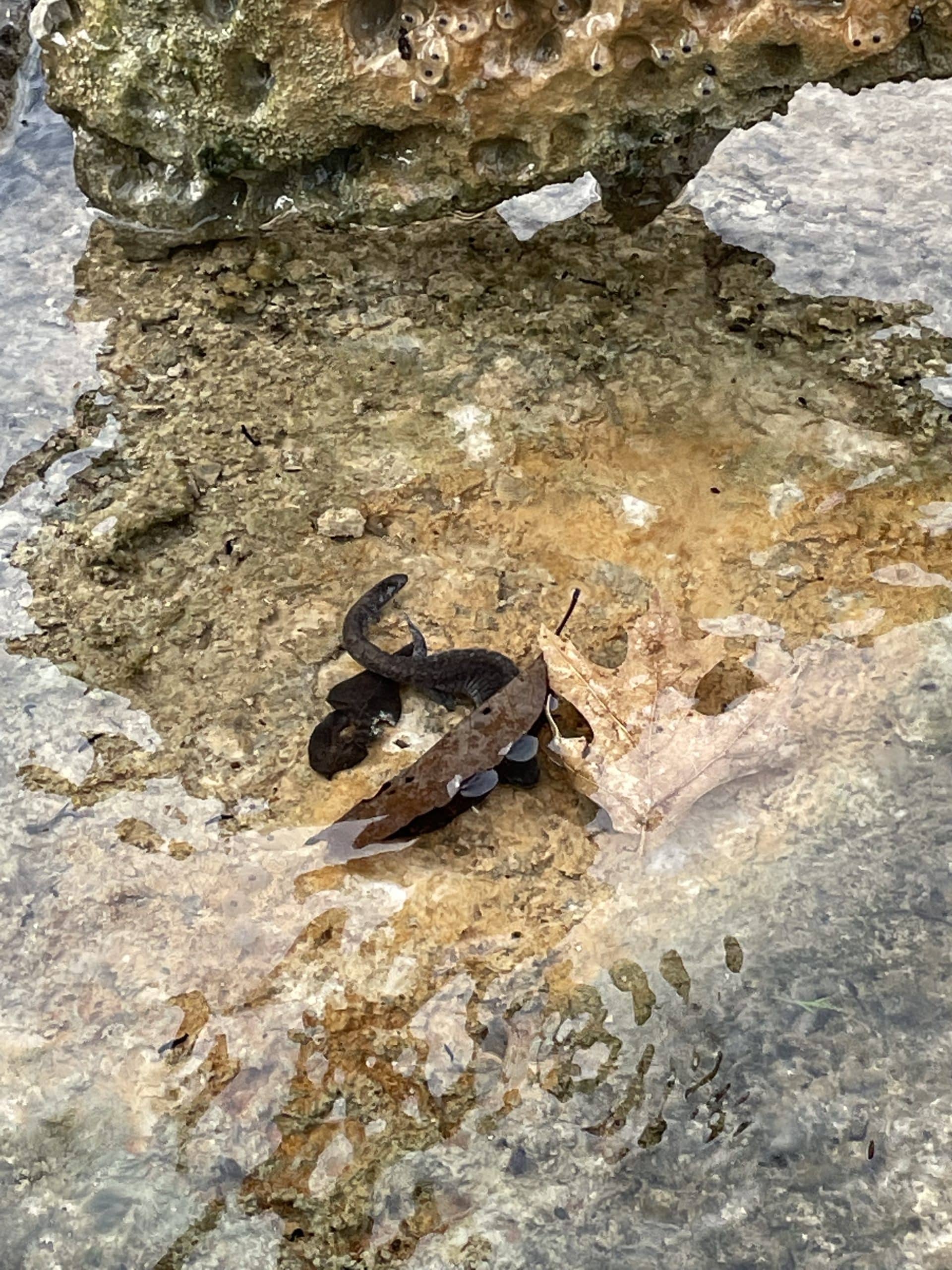Streamside Salamanders on Your Site? What’s Next?
December 04, 2024
About the Streamside Salamander
It’s almost active season for the Streamside Salamander – here’s what to keep in mind.

Streamside Salamander, Source: United States Fish and Wildlife (USFWS)
The Streamside Salamander (Ambystoma barbouri) is a species of salamander found in the eastern United States in Indiana, Tennessee, Ohio, Kentucky, and West Virginia. They have a brownish-gray appearance with small gray speckles, and a typical size of 4 to 5.5 inches with a stocky body and small head.
Streamside Salamander Habitat and Behavior
Streamside Salamanders are found in and along healthy streams with limestone bedrock, usually within deciduous forests. Adult salamanders eat terrestrial prey such as earthworms and slugs, while their larvae typically eat aquatic invertebrates.
Their breeding season takes place from December to April, and during this time they are the most active. Female Streamside Salamanders will deposit eggs on the undersides of flat rocks in the pools of their breeding streams, and these eggs typically hatch around April. They are an elusive species during their inactive months when they reside in underground burrows close to their breeding sites.

Streamside Salamander Threats
The biggest threat to the Streamside Salamander is forest and stream degradation as a result of urbanization and agricultural development. The salamanders are most successful in ephemeral and intermittent streams with plenty of natural barriers, flat rocks, and filamentous algae for protection from fish. As the quality of these streams are impacted due to development, their habitat may become more sporadic and limited.
The Streamside Salamander is listed as State Endangered in Tennessee and is afforded protection by the state. They are listed as at-risk by the US Fish & Wildlife Service (USFWS), meaning they currently have no federal protection.

 S&ME’s Natural Resources Project Manager, Caitlan Howard, is based in Nashville, Tennessee, and speaks to the endangered Streamside Salamander.
S&ME’s Natural Resources Project Manager, Caitlan Howard, is based in Nashville, Tennessee, and speaks to the endangered Streamside Salamander.
“Middle Tennessee, and particularly areas surrounding Nashville, have experienced increased growth over the last decade. With that, there’s much demand for both commercial and residential development. Streamside Salamanders were designated by the state as endangered species in 2018 due to habitat loss, so the surveys are critical to determining their prevalence on a given site and which best management practices should be used to help development move forward.”
Moving Forward with Streamside Salamanders Present on Your Property
Streamside Salamanders are protected in Tennessee , meaning that surveys and certain restrictions may be required before development can occur. The Tennessee Wildlife Resource Agency (TWRA) has in place an in-stream construction restriction from December to June during the salamanders’ breeding season. If there are known occurrences of the species in an area, the TWRA will also require two presence/absence surveys to be conducted between December 15 and March 15 at least 45 days apart.
, meaning that surveys and certain restrictions may be required before development can occur. The Tennessee Wildlife Resource Agency (TWRA) has in place an in-stream construction restriction from December to June during the salamanders’ breeding season. If there are known occurrences of the species in an area, the TWRA will also require two presence/absence surveys to be conducted between December 15 and March 15 at least 45 days apart.
If you are developing in a suspected Streamside Salamander habitat, here’s what a typical survey process looks like:
- Step 1: An environmental consultant will preform a threatened and endangered species assessment to determine if a suitable habitat for the Streamside Salamander is present;
- Step 2: If suitable habitat is identified, the team will coordinate presence/absence surveys to confirm occurrence;
- Step 3: The team will correspond with the Tennessee Department of Environment & Conservation (TDEC) and TWRA regarding requirements and restrictions.
- Step 4: The team will share the report and advise on next steps for your site.
S&ME’s Environmental and Natural Resources teams offers a suite of integrated assessment services to address environmental issues. Our experience brings practical and cost-effective solutions that use proven and innovative remedial technologies to meet your specific project requirements.
